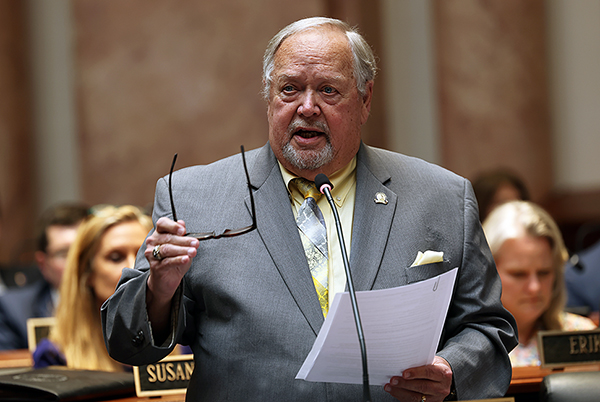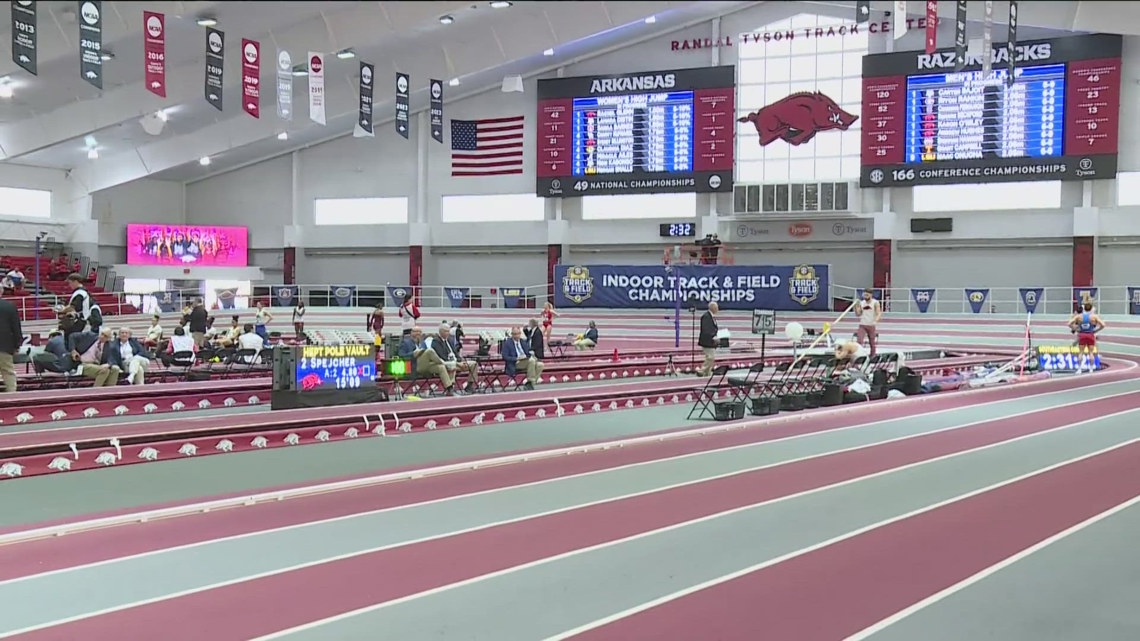NIL
Arkansas Gov. signs law exempting NIL deals from taxes, FOIA requests
The law was signed amid controversy between the U of A’s NIL collective and a player who joined the transfer portal just months after arriving on campus. Author: 5newsonline.com Published: 6:34 PM CDT May 9, 2025 Updated: 6:34 PM CDT May 9, 2025 8
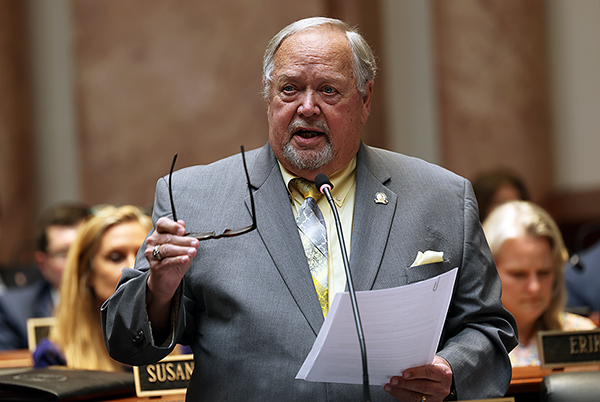
NIL
Women’s College World Series: Oklahoma, Oregon punch tickets with super-regional sweeps
The field of the Women’s College World Series is beginning to assemble, with the first tickets officially punched on Saturday and more to come on Sunday as teams play out the NCAA softball super regionals. Three teams have already completed sweeps to finish the job, including the defending champs and an underdog. Here is every […]
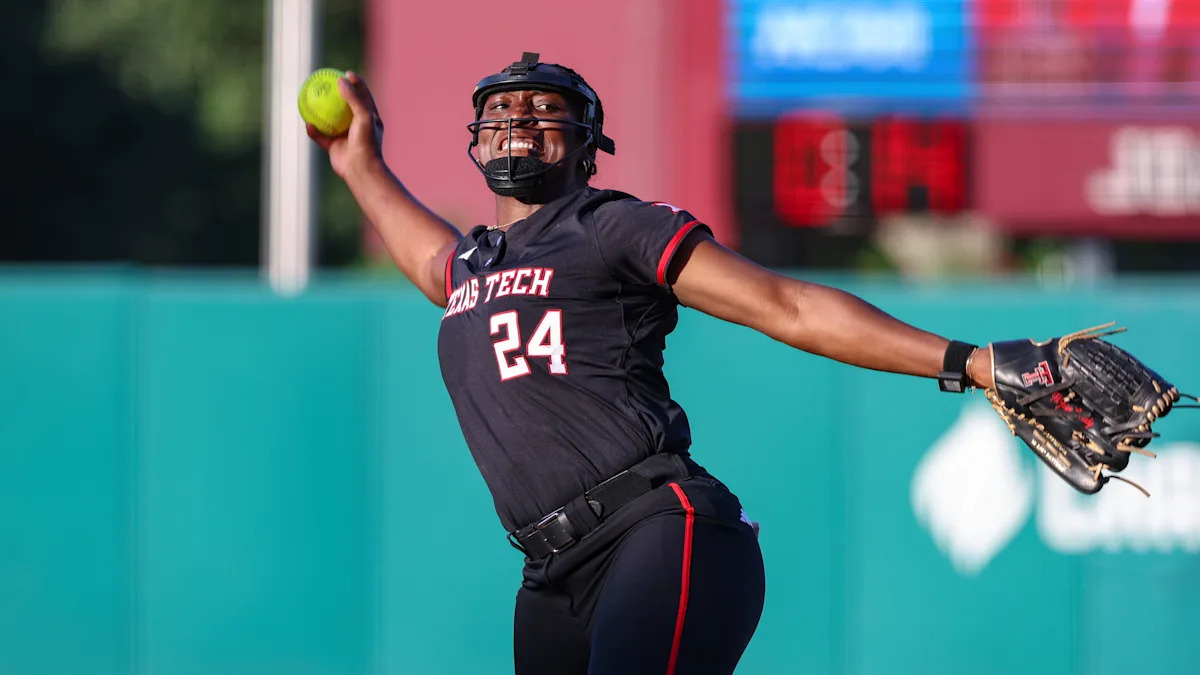
The field of the Women’s College World Series is beginning to assemble, with the first tickets officially punched on Saturday and more to come on Sunday as teams play out the NCAA softball super regionals.
Three teams have already completed sweeps to finish the job, including the defending champs and an underdog. Here is every team that has qualified so far and how they got there.
Texas Tech
Texas Tech, a 12-seed, took down No. 5 Florida State on Friday.
Advertisement
NiJaree Canady, who transferred to Texas Tech from Stanford for the largest-ever softball NIL deal, led the way for the Red Raiders, pitching seven innings each in Games 1 and 2, allowing just one total run. Canady added a hit, RBI and a walk in Game 1.
It will be Texas Tech’s first appearance in the WCWS.
Oklahoma
No. 2 Oklahoma, the seven-time NCAA champs, joined Texas Tech on Saturday with a mercy-rule sweep over Alabama.
After a 3-0 win over the Crimson Tide on Friday, the Sooners punched their ticket with a 13-2 win on Saturday, with the matchup ending after five innings due to the mercy rule. Freshman shortstop Gabbie Garcia hit two two-run homers, including one that began a nine-run third inning for Oklahoma.
NIL
Mississippi State Bulldogs Receive Multi-Million Dollar Donation for Athletics
The Mississippi State Bulldogs have seen varying levels of success across the three major sports in the era of Name, Image and Likeness. The Bulldogs are just four years removed from winning the College World Series in baseball, have made it to at least a play in game for the NCAA Tournament in each of […]
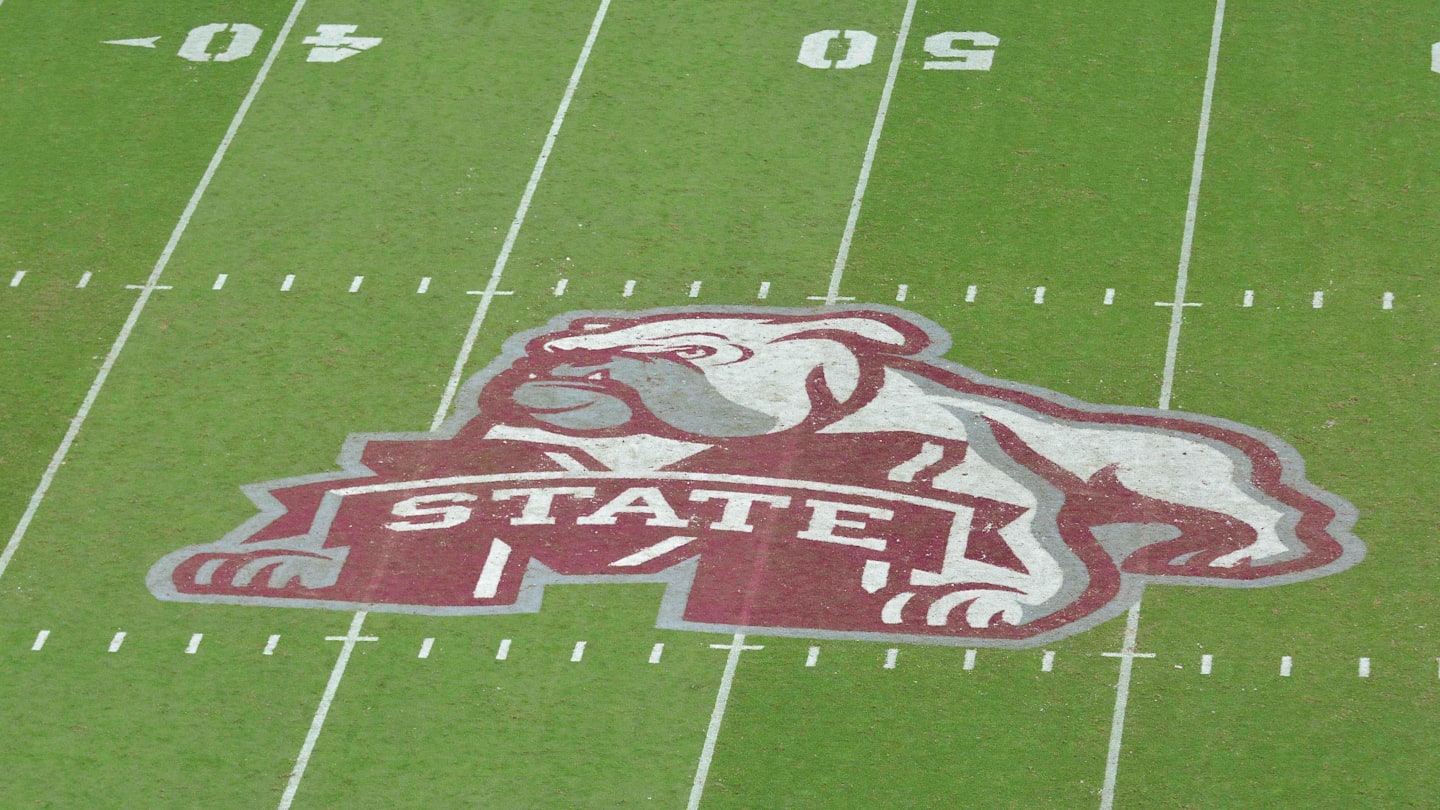
The Mississippi State Bulldogs have seen varying levels of success across the three major sports in the era of Name, Image and Likeness.
The Bulldogs are just four years removed from winning the College World Series in baseball, have made it to at least a play in game for the NCAA Tournament in each of the last three campaigns for men’s basketball, and are coming off of one of the worst seasons in the history of the program in football.
It has not stopped the Mississippi State fans from supporting their alma mater, and a recent report from the university indicates that one family has made a donation to the athletic department for $2.5 million.
Vicksburg, Mississippi natives, the Golding family have been long-time supporters of the Bulldogs, playing a key role in the advancement of the university for many years. The family is filled with alumni of the university, with Steve Golding serving as the family’s figurehead.
“Whether it’s running a successful business or competing in high-level athletics, ensuring your team has the resources it needs – while cultivating a relentless work ethic and a high-achieving culture – is something we firmly believe in,” said Steve Golding. “Mississippi State is a source of great pride for our family, and we want to be part of the solution as the department strives to reach new heights.”
News of this donation comes just days after it was revealed that the Bulldogs were the only SEC program not to spend $1 million or more in football recruiting over fiscal year 2024, which preceded the most recent season. The football program would go 2-10 on the year, with a 0-8 record in conference play, finishing last in the conference for the first time this century.
“A huge thank you to Steve, Melody, Austin, Kirsten and John Reid for their direct impact on Mississippi State Athletics,” said Mississippi State director of athletics Zac Selmon. “The Goldings care deeply for our university, our community, and our state. Their thoughtful decision to join us in this pursuit is a testament to their generosity and relentless competitive spirit. We are grateful.”
NIL
Florida A&M Silences Grambling’s Bats, Advance To SWAC Championship
In the SWAC foes’ third meeting in the SWAC Baseball Tournament, Junior Justen Crews racked up four RBIs to help lead the Florida A&M Rattlers to a victory over the Grambling State Tigers 9-1 on Saturday. The Rattlers advance to face Bethune-Cookman for a 2 PM EST start on Sunday afternoon at Rickwood Field in Birmingham, Alabama. […]

In the SWAC foes’ third meeting in the SWAC Baseball Tournament, Junior Justen Crews racked up four RBIs to help lead the Florida A&M Rattlers to a victory over the Grambling State Tigers 9-1 on Saturday. The Rattlers advance to face Bethune-Cookman for a 2 PM EST start on Sunday afternoon at Rickwood Field in Birmingham, Alabama.
Senior Cody Williams (5-3) got the win for Florida A&M (33-24). The right-hander went eight innings, giving up one run on eight hits, allowing three walks and striking out seven. Freshman Ryan Young also pitched well, going one shutout inning without allowing a hit.
Crews went 2-for-5 in addition to his four RBIs for the Rattlers. Freshman Jay Campbell compiled a standout effort as well, going 1-for-2 with a double, three walks and three RBIs. Junior William Brown also chipped in for Florida A&M, putting together two hits in five trips to the plate while adding a double.
Grambling took an early 1-0 lead in the second inning as Aries Gardner singled to left field driving in Chris Marcellus to score.
FAMU finally reaching the scoreboad on a Jay Campbell walk that advanced Josue Figuroa to score a an unearned run. Justen Crews would single to center field for two RBIs with Broedy Poppell and Justin Lopez reaching home plate. The Rattlers would take a 3-1 after three innings.
The Rattlers’ pitching and fielding kept the Tigers scoreless having a 9-1 lead going into the eighth inning where it remained until the final toss out.
GAME NOTES FROM FAMU
» Williams struck out seven Tigers hitters.
» Crews drove in four runs for Florida A&M.
» Florida A&M’s highest scoring inning was the eighth, when it pushed five runs across.
» Florida A&M took the lead at 3-1 in the bottom half of the third and never lost that advantage.
» Williams put together eight innings of one-run ball for the Rattlers.
» Four Rattlers had multiple hits in the ballgame.
» The Rattlers out-hit the Tigers at an 11-8 clip.
» Florida A&M went 3-for-10 (.300) with runners in scoring position.
» Florida A&M pitchers limited Grambling to just 1-for-7 (.143) with runners in scoring position.
» Florida A&M pitchers faced 37 Grambling hitters in the game, allowing nine ground balls and nine fly balls while striking out seven.
» The Rattlers drew seven walks from Grambling pitching.
» Campbell led the Rattlers at the plate, going 1 for 2 with a double and three RBIs.
» Grambling was led offensively by junior Trey Bridges, who went 3 for 4 with a double.
SWAC Baseball Tournament Championship
FAMU will match-up with rival Bethune-Cookman Sunday at 2 p.m. EST. The contest will be televised on ESPN +.
SWAC Baseball
NIL
Will House v. NCAA Settlement Actually Solve the Real Problems With NIL?
The House v. NCAA settlement has placed the world of college sports in an impractical waiting period. The proposed date pending approval is July 1—the same day that marks the start of the 2025-26 athletic fiscal calendar. But there’s not a clear direction for what the enforcement entity will be or look like. Yet, many […]

The House v. NCAA settlement has placed the world of college sports in an impractical waiting period.
The proposed date pending approval is July 1—the same day that marks the start of the 2025-26 athletic fiscal calendar.
But there’s not a clear direction for what the enforcement entity will be or look like.
Yet, many in the college football world expected that decision to come last week. There’s frankly no guarantee Judge Claudia Wilken will approve the terms as they stand with her noted problems involving roster limits.
States are enacting laws that directly support schools’ rights to ignore the limits imposed on NIL by the salary cap and collective restrictions. Amidst that, the Power Four is attempting to wrangle members into signing a document forcing adherence.
Has this chaos truly addressed the core issues with NIL and college sports?
Justin Giangrande, CEO and founder of NETWORK, a sports marketing and management agency, spoke exclusively with NIL Daily on SI about the settlement’s impact on college sports at every level and what is really at the heart of the matter.
It is evident that a power vacuum has emerged due to the NCAA effectively withdrawing from its role in enforcing college amateurism, which has changed the responsibilities of individuals involved in the sport in unexpected ways.
“All of these athletic directors are meant to be like powerful CEOs now, but that’s not how they were built,” Giangrande said. “Then each school has a different power dynamic: President, magistrate AD. Who is making the decisions?”
The lack of federal legislation or the implementation of the revenue-sharing era through the settlement has led to that vacuum causing power struggles at every level: the conferences with the NCAA, state-by-state laws that are trying to catch an advantage.
“Life is about momentum,” Giangrande continued. “We’ve learned through this, you give people time and thought to pick you apart, and they will. I think the toughest thing in this environment is that every school has an agenda and can decide how they want to move.”
The NIL situation has reverted to square one.
There are schools that will adhere strictly to the cap and NIL clearinghouse guidelines. It would feel foolish to assume that others with powerful boosters won’t find ways to circumvent those restrictions in chasing a championship.
The Power Four conferences are actively attempting to prevent this by coercing schools into signing an agreement that explicitly forbids such actions.
No one wants to treat the athletes like employees in all of this, despite making a system that dictates their earning potential and market value with limitations on earnings paid directly by schools.
No one has even bothered to include the athletes in any discussions of this.
Giangrande believes that the settlement and revenue-sharing is a way to skirt that and prolong this untenable world of non-employment.
“When you do an endorsement deal with a pro player, that brand chooses to pay that player based not only on what he’s currently worth but also on if they think that he’s going to have a good career; they’re projecting his upside,” Giangrande said. “If I invest in, let’s say, a wide receiver who was drafted in the second round, but I think he’s going to be really good, and I do an endorsement deal with him, I’m taking a chance and hoping that I catch upside, that he really becomes good. So how do you determine fair market value? I think that’s a very tough stance to have.”
As Giangrande aptly and humorously put it, the state of college football reads more like Yellowstone meets Succession.
It’s a state with no clear end date, despite July 1 feeling all but imminent.
Will schools even follow it if it receives approval and is it effective in addressing the fundamental issues within the sport?
With athletes left out of the conversation, it’s hard to feel like this is the solution best for them and not one created out of a concern to gain back control from players.
NIL
Will House v. NCAA Settlement Actually Solve the Real Problems With NIL?
The House v. NCAA settlement has placed the world of college sports in an impractical waiting period. The proposed date pending approval is July 1—the same day that marks the start of the 2025-26 athletic fiscal calendar. But there’s not a clear direction for what the enforcement entity will be or look like. Yet, many […]
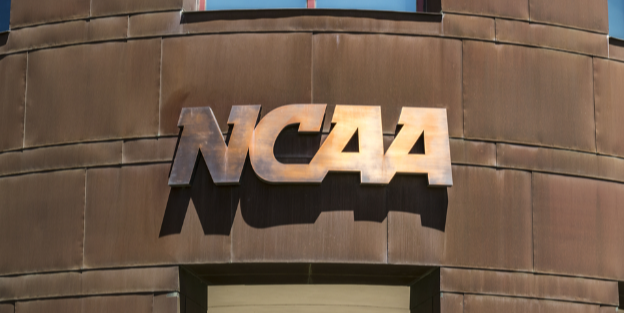
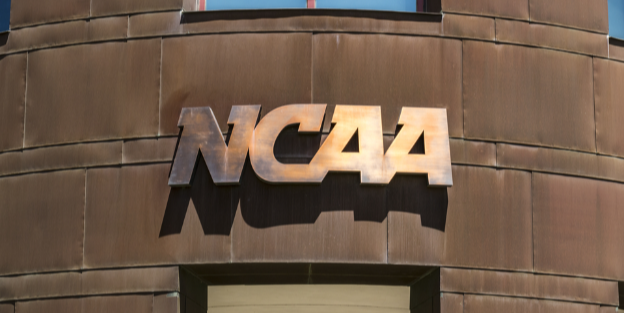
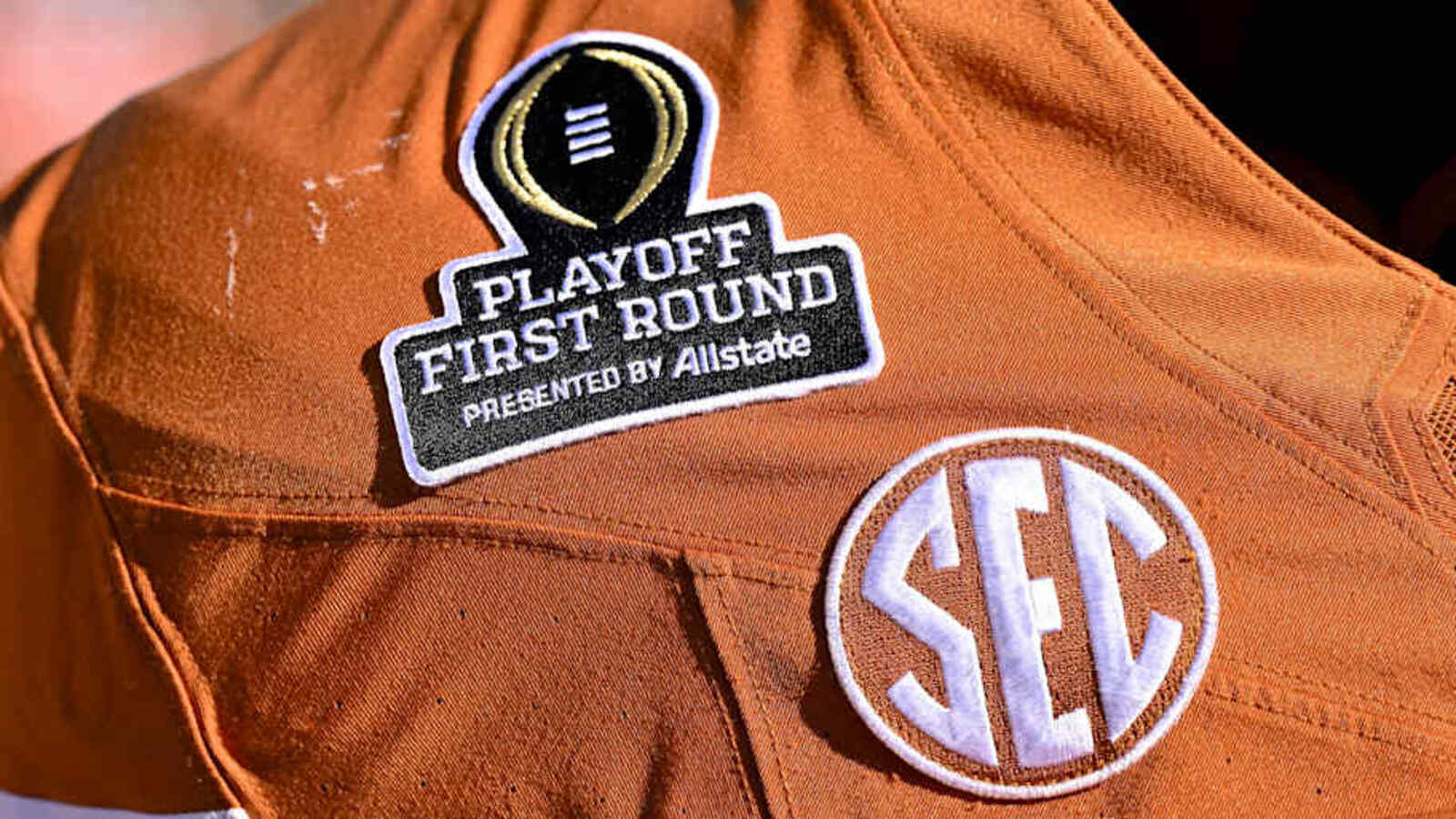
The House v. NCAA settlement has placed the world of college sports in an impractical waiting period.
The proposed date pending approval is July 1—the same day that marks the start of the 2025-26 athletic fiscal calendar.
But there’s not a clear direction for what the enforcement entity will be or look like.
Yet, many in the college football world expected that decision to come last week. There’s frankly no guarantee Judge Claudia Wilken will approve the terms as they stand with her noted problems involving roster limits.
States are enacting laws that directly support schools’ rights to ignore the limits imposed on NIL by the salary cap and collective restrictions. Amidst that, the Power Four is attempting to wrangle members into signing a document forcing adherence.
Has this chaos truly addressed the core issues with NIL and college sports?
Justin Giangrande, CEO and founder of NETWORK, a sports marketing and management agency, spoke exclusively with NIL Daily on SI about the settlement’s impact on college sports at every level and what is really at the heart of the matter.
Does the House v. NCAA Settlement Really Offer a Better Future for NIL?
It is evident that a power vacuum has emerged due to the NCAA effectively withdrawing from its role in enforcing college amateurism, which has changed the responsibilities of individuals involved in the sport in unexpected ways.
“All of these athletic directors are meant to be like powerful CEOs now, but that’s not how they were built,” Giangrande said. “Then each school has a different power dynamic: President, magistrate AD. Who is making the decisions?”
The lack of federal legislation or the implementation of the revenue-sharing era through the settlement has led to that vacuum causing power struggles at every level: the conferences with the NCAA, state-by-state laws that are trying to catch an advantage.
“Life is about momentum,” Giangrande continued. “We’ve learned through this, you give people time and thought to pick you apart, and they will. I think the toughest thing in this environment is that every school has an agenda and can decide how they want to move.”
The NIL situation has reverted to square one.
There are schools that will adhere strictly to the cap and NIL clearinghouse guidelines. It would feel foolish to assume that others with powerful boosters won’t find ways to circumvent those restrictions in chasing a championship.
The Power Four conferences are actively attempting to prevent this by coercing schools into signing an agreement that explicitly forbids such actions.
No one wants to treat the athletes like employees in all of this, despite making a system that dictates their earning potential and market value with limitations on earnings paid directly by schools.
No one has even bothered to include the athletes in any discussions of this.
Giangrande believes that the settlement and revenue-sharing is a way to skirt that and prolong this untenable world of non-employment.
“When you do an endorsement deal with a pro player, that brand chooses to pay that player based not only on what he’s currently worth but also on if they think that he’s going to have a good career; they’re projecting his upside,” Giangrande said. “If I invest in, let’s say, a wide receiver who was drafted in the second round, but I think he’s going to be really good, and I do an endorsement deal with him, I’m taking a chance and hoping that I catch upside, that he really becomes good. So how do you determine fair market value? I think that’s a very tough stance to have.”
As Giangrande aptly and humorously put it, the state of college football reads more like Yellowstone meets Succession.
It’s a state with no clear end date, despite July 1 feeling all but imminent.
Will schools even follow it if it receives approval and is it effective in addressing the fundamental issues within the sport?
With athletes left out of the conversation, it’s hard to feel like this is the solution best for them and not one created out of a concern to gain back control from players.
More NIL News
NIL
What we learned from Georgia Tech's Transfer Haul and Actions This Portal Cycle
With the transfer portal closed and the offseason rolling along, let’s take a look back at what Georgia Tech did in the transfer portal window and what it could tell us about their team this fall During the spring transfer portal, we saw the Yellow Jackets beefed up their offensive line and wanted to get […]
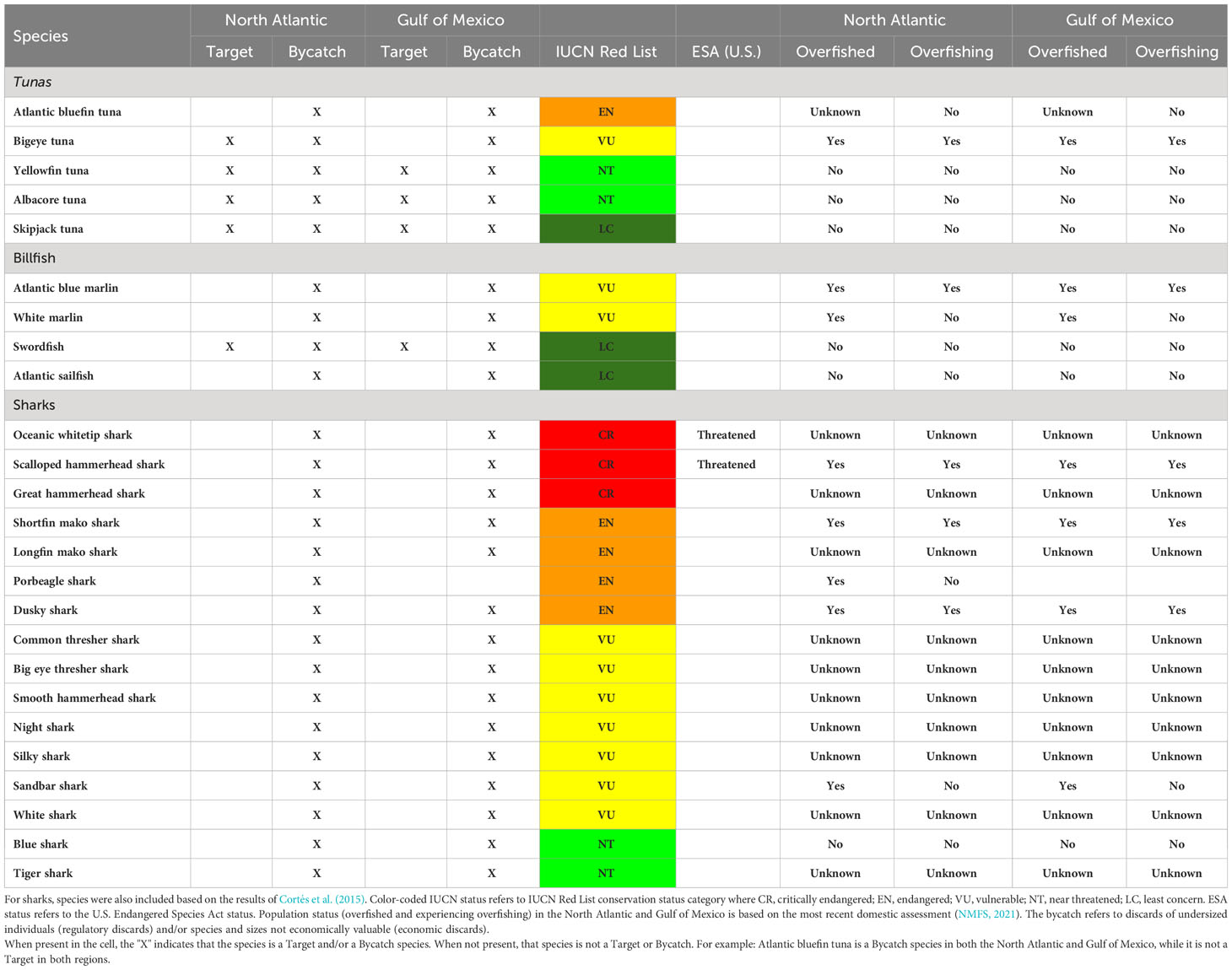
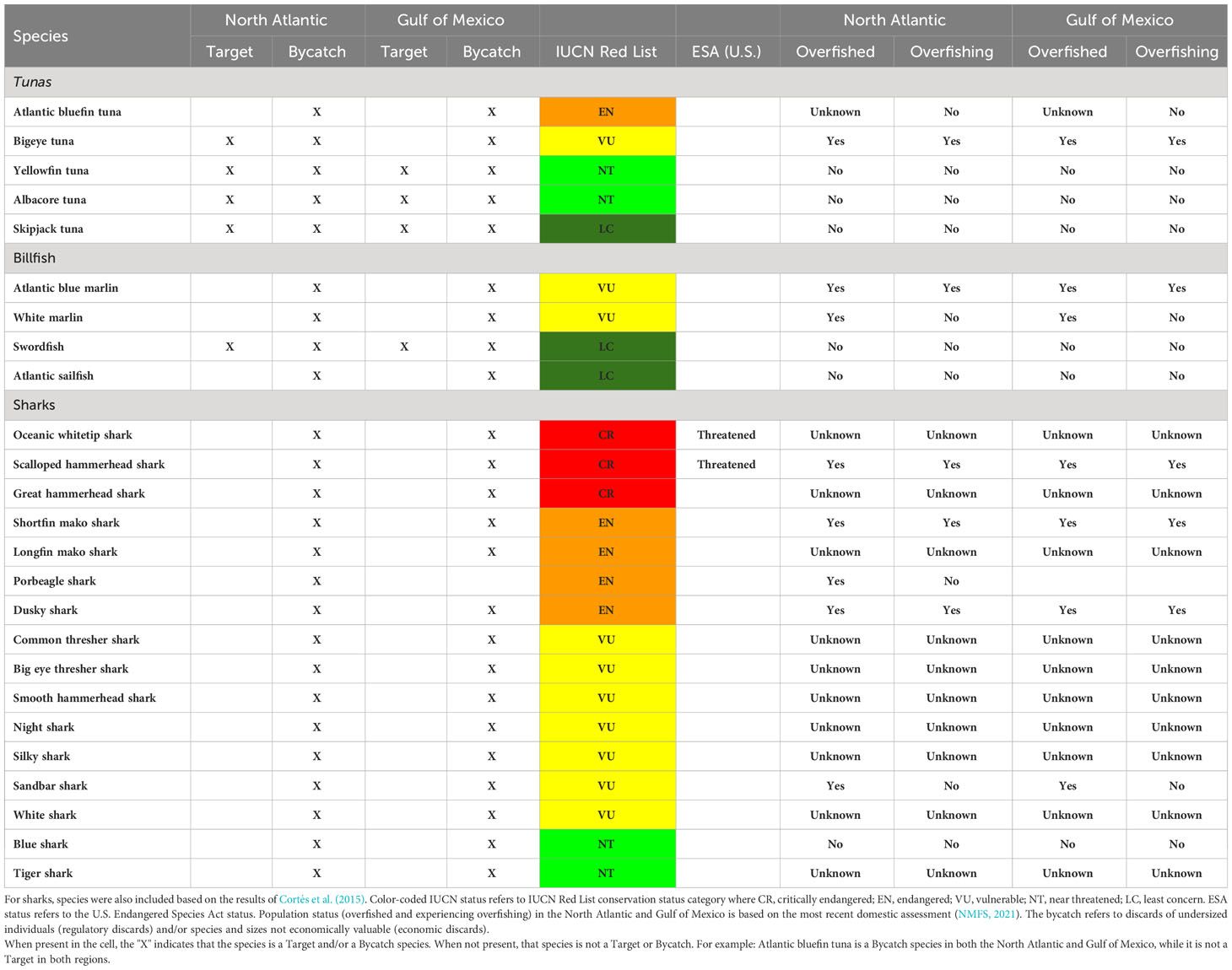

With the transfer portal closed and the offseason rolling along, let’s take a look back at what Georgia Tech did in the transfer portal window and what it could tell us about their team this fall
During the spring transfer portal, we saw the Yellow Jackets beefed up their offensive line and wanted to get more depth at the position group especially offensive tackle. With the addition of William Reed from Princeton, who is a viable starter and Malachi Carney from South Alabama, the Yellow Jackets have two guys they can depend on to lead the charge.
Here is more on Reed and what he brings to the Yellow Jackets.
“He has great size at 6’6 and 305 pounds and is a mover in the round game, mauling defenders out of the way. In pass protection, he has great form and footwork and has shown he can be an anchor. In 2024, he started every game at right tackle and in 2023 appeared in nine games with the Tigers. In 2022, he appeared in five games and was a part of the No. 1 passing offense and the No. 2 scoring offense with Princeton in the Ivy League conference.”
Here is more on Carney as a player
“According to 247Sports, Carney is the 6th best offensive tackle in the portal. The 6’4 310 LBS tackle played two years for the Jaguars and last season, he played 855 snaps according to PFF (Pro Football Focus) and finished with a 59.0 overall grade, including a 64.7 in pass blocking and a 66.6 in run blocking. In 2023, he played 317 snaps and finished with a 50.5 overall grade, including a 38.4 grade in pass blocking and 64.8 grade in run blocking.”
Georgia Tech lost some of their starters from a season ago on the offensive line and had to address it in their 2025 recruiting class and in the transfer portal. Spring portal departures on the offensive line for the Yellow Jackets included Brandon Best who signed with Kennesaw State.
With so many great playmakers on this team and a deep running back room, we saw talented running back Anthony Carrie hit the transfer portal and dependable veteran Trey Cooley depart. Carrie signed with FIU (Florida International University) and Cooley signed with Troy.
The Yellow Jackets will have Jamal Haynes, Malachi Hosley, Daylon Gordon, Chad Alexander, Trelain Maddox, and JP Powell all manning the backfield. They still will have a true freshman coming in, Shane Marshall, in the fall. Georgia Tech should be a formidable unit at the running back spot in 2025.
Georgia Tech saw three tight ends hit the transfer portal in Jackson Long, David Prince, and Harry Lodge.
Long transferred to Georgia Tech after one season with South Florida. He decided to redshirt with Georgia Tech in 2023 and missed all of 2024 with an injury. Prince was a three-star prospect coming out of high school and a two-time all-district player but couldn’t see the field for the Jackets in 2024. Lodge spent a brief time with the Jackets before transferring back to his original team in Wake Forest.
The Yellow Jackets have five tight ends on the roster: Luke Harpring, Josh Beetham, Brett Seither, J.T. Byrne and walk-on Blake Ragsdale. Georgia Tech will also welcome two tight ends from the 2025 class: three-star Kevin Roche, and three-star Connor Roush.
We saw the Yellow Jackets add to their receiver room in the winter transfer portal really beefing up the position with ready-to-play veterans. The spring window saw the Yellow Jackets not be as aggressive but landing a solid addition that could be another weapon for Georgia Tech on special teams in Raheem Smith from Bowling Green.
Now, this could be a situation where they look at Smith being used as a potential speciality player and by that I mean certain situations bring him into the game or be a potential kick returner on special teams. He has lightning-quick speed that will be an asset for Georgia Tech, and he is capable of exploding for long gains.
Smith finished his final season with Bowling Green with 25 catches for 349 yards and three touchdowns. He also had 20 carries for 128 yards and three touchdowns. He had a 40-yard reverse play in a game against Texas A&M this past season.
We know how creative offensive coordinator Buster Faulkner is and adding another weapon to the arsenal certainly can help a productive offense from a season ago. Expect Smith to be used in various ways on offense.
All in all the offense, they made good additions that can be valuable to get this team to where they want to go in 2025 which is competing for an ACC championship and making the college football playoff. They have more depth than we have seen in recent years, which could prove pivotal in the Yellow Jackets taking the next step.
-

 High School Sports2 weeks ago
High School Sports2 weeks agoWeb exclusive
-

 Sports2 weeks ago
Sports2 weeks agoPrinceton University
-

 Sports2 weeks ago
Sports2 weeks ago2025 NCAA softball bracket: Women’s College World Series scores, schedule
-

 Motorsports2 weeks ago
Motorsports2 weeks agoBowman Gray is the site of NASCAR’S “Advance Auto Parts Night at the Races” this Saturday
-

 NIL2 weeks ago
NIL2 weeks ago2025 Big Ten Softball Tournament Bracket: Updated matchups, scores, schedule
-

 NIL2 weeks ago
NIL2 weeks agoPatty Gasso confirms Sophia Bordi will not finish season with Oklahoma softball
-

 Motorsports3 weeks ago
Motorsports3 weeks agoMOTORSPORTS: Three local track set to open this week | Sports
-

 Motorsports2 weeks ago
Motorsports2 weeks ago$1.5 Billion Legal Powerhouse Announces Multi-Year NASCAR Deal With Kyle Busch
-
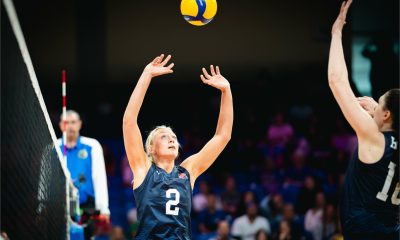
 Sports2 weeks ago
Sports2 weeks agoUSA Volleyball Announces 2025 Women’s VNL Roster
-
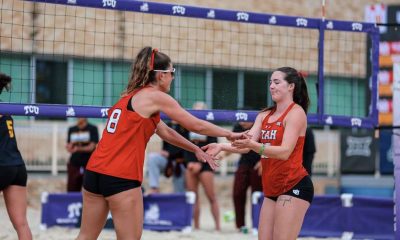
 Sports2 weeks ago
Sports2 weeks agoA fight to save beach volleyball and Utah athletics’ ‘disheartening’ answer

